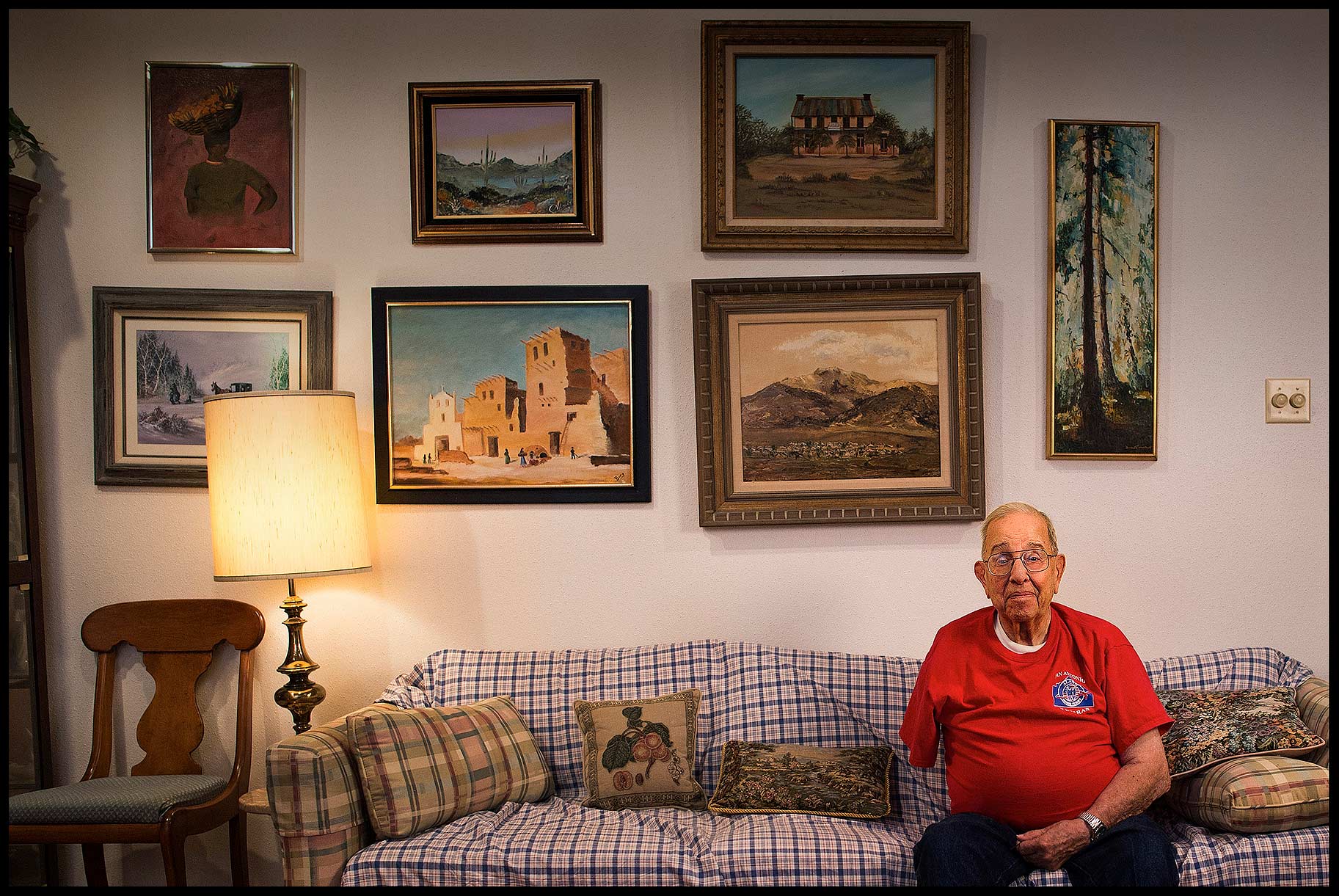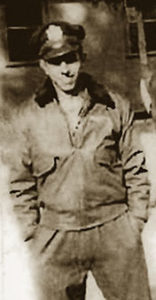
Vince Losada
Bombardier
B-17 Flying Fortress
Vince Losada
First Lieutenant, Army Air Corps, Ret.
1943–1947
1st Lt. Vince Losada
Lavenham, England, 1945I never felt bad about my injury. I was just glad I got back alive.
I was raised in Cleveland, Ohio. As soon as I got out of high school, I joined the Army Air Corps. After basic training in Biloxi, Mississippi, we were sent to the San Antonio Classification Center to take tests to determine our Military Occupation Specialty. After a year and a half of training, I was commissioned a 1st Lieutenant and became a bombardier on a B-17 Flying Fortress.
We boarded our overseas plane at Hunter Field in Savannah, Georgia, arriving in Lavenham, England on December 1, 1944. This was the winter of the Battle of the Bulge. On December 23 & 24 there was a massive 2,000-plane raid to support the battle. Our group was designated the lead group for the whole mission. We sent out 39 planes and lost 13. I flew 24 missions all over Germany, and on the 25th I was injured. In order to complete your tour, you had to fly 25 missions. They never thought anyone would complete 25. They were all considered suicide missions.
It’s hard for anyone who hasn’t been there to understand what the flight crew goes through. It was very dangerous. There was nothing wrong with the flying, but 20 minutes from the target, the flak started. The commanding officers only stayed 4-6 months at a time. They couldn’t handle the tension and writing those letters home announcing the death of a loved one.
I manned the chin turret gun located in the forward position. It was March 15, 1945, our 25th mission; the target was Oranienburg, Germany. We went in through the Zuiderzee and hit the target on the outskirts of Berlin. The flak was intense and very accurate. Right after we dropped our bombs I was hit, severing my right arm above the elbow. I had a couple of even more serious wounds on my back. The crew’s waist gunner applied a tourniquet and gave me morphine, preparing me for the long journey home. I almost bled to death.
I got blood transfusions in England and the wound got real bad. They put me in a half body cast for the flight back to the States. We stopped at Roanoke, Virginia at a hospital, which was actually an insane asylum. I talked the nurse into letting me out to go eat. When I got back, everything was locked up. I threw stones to wake someone to let me back in. I laid down and I don’t remember anything until I woke up in Temple, Texas. I found out why. Nobody had attended to my wound and gangrene set in with maggots. The doctor was angry.
I was treated and then recuperated in the hospital there. From Temple, they put me on temporary leave and then sent me to a desk job at Chanute Field, Illinois. I was assigned to a budget and fiscal office, figuring out how much money airmen were due. I retired in February, 1947.
I went to Cleveland on one of my leaves. I met a very nice lady and, when she got off work late one night, ended up buying her a drink. I went to see her almost every weekend. In 1947, we got married after I retired from the Army. I went to work for an insurance company as a casualty underwriter. That winter, after a real bad snow storm, I said, ‘Eleanor, I’m not putting up with this snowfall anymore. We’re going to sell the house and go to Texas!’
I got a job working as an insurance underwriter in San Antonio making $150 more than I did in Cleveland. That was a lot of money back then. I retired in 1969. We bought a motor home, took trips to Alaska, and three or four trips each to the east and west coasts. I think that’s what kept me alive—those trips.
I enjoyed it all, but I am most proud that I served. The worst day was my last mission when I was hit. I knew it was serious. I never regretted being in the service. {04-29-2015 • San Antonio, TX}
